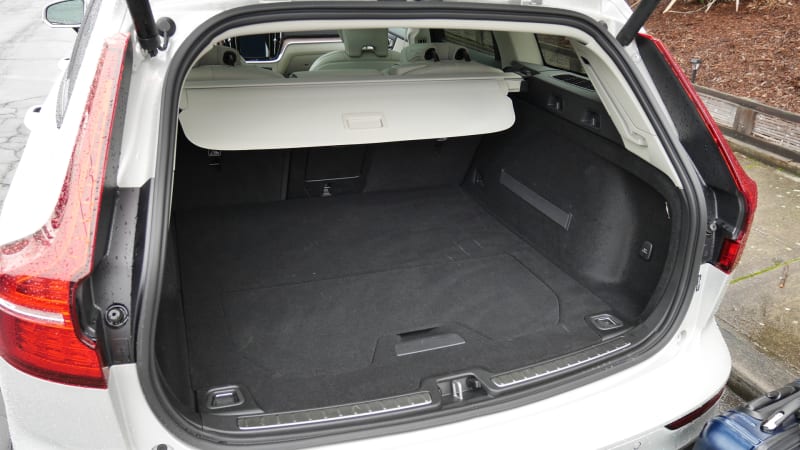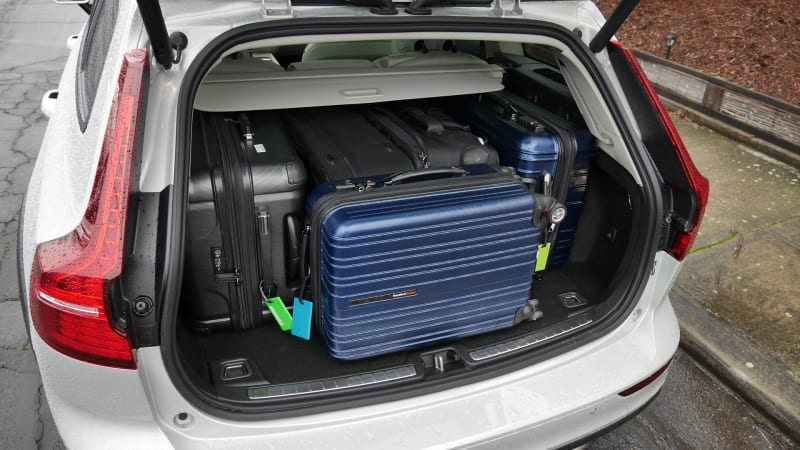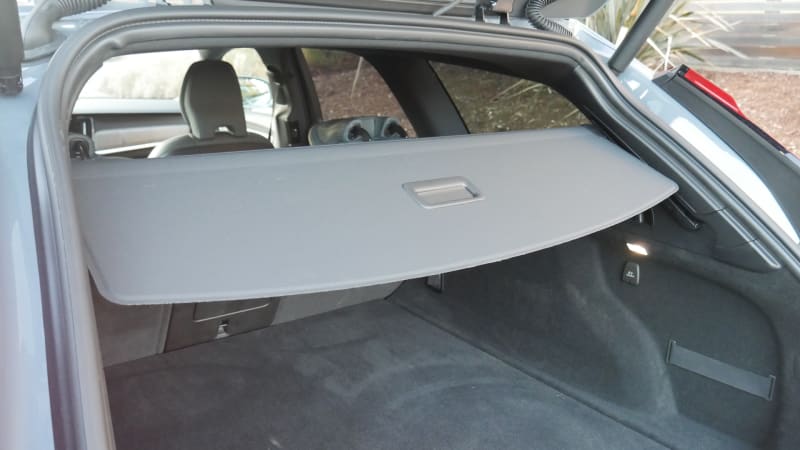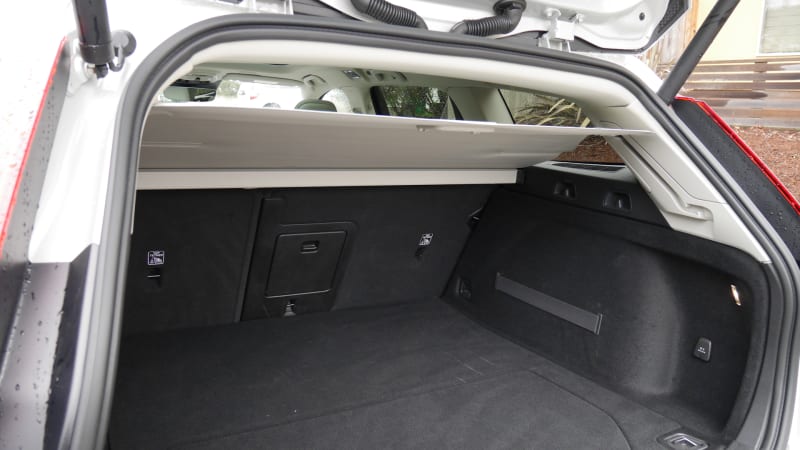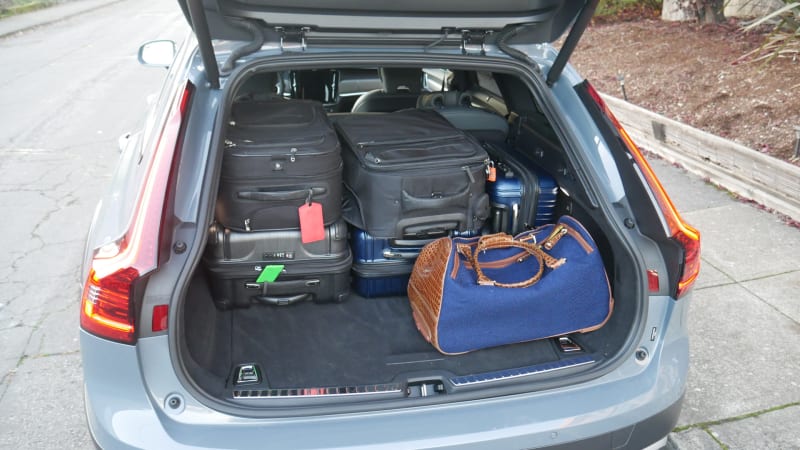While the Audi A6 Allroad and Mercedes E 450 All-Terrain have disappointed us with their poseur levels of capability and questionable value, that is not the case with the other midsize luxury off-roadish wagon: the 2021 Volvo V90 Cross Country. It has genuinely useful extra ground clearance and a lower, more sensible price. But what about that other element of wagon goodness, utility?
Although I have not luggage-tested the Allroad or All-Terrain, Road Test Editor Zac Palmer effectively did so using different luggage and different A6/E-Class wagon variants. Our results are therefore only vaguely comparable. My guess is the Mercedes would win the day and the V90 would top the Audi, but again, that’s just a guess.
I have, however, luggage-tested Volvo’s smaller off-roadish wagon, the V60 Cross Country. Surprisingly, the difference between Cross Countries isn’t that great.
According to Volvo’s wonderfully detailed cargo specifications that indicate what exactly they measured (hint hint, every other car company), the V90 Cross Country (above left) has 25.5 cubic-feet of space behind the back seat from floor to roof. The V60 Cross Country (right) has 23.2 cubic feet. That’s not much of a difference.
However, Volvo also provides the cargo area length from the seat base to the liftgate. That’s a bigger difference on paper: 45.4 inches for the V90 and 40.7 inches for the V60. That would play out once I brought the luggage into the equation.
Before we get to the bags, though, take one more look at the above comparison photo. Check out the different D pillars and specifically how much more upright the V60’s are. That’s my guess as to why the V90 cargo area manages to be so much longer, yet has only a minor volume difference.
Same bags, same formation, different Volvo wagons. You clearly see here that there’s more length available in the V90. Five inches more? I don’t know about that, but you nevertheless DO get more space.
As with every luggage test I do, I use two midsize roller suitcases that would need to be checked in at the airport (26 inches long, 16 wide, 11 deep), two roll-aboard suitcases that just barely fit in the overhead (24L x 15W x 10D), and one smaller roll-aboard that fits easily (23L x 15W x 10D). I also include my wife’s fancy overnight bag just to spruce things up a bit (21L x 12W x 12D).
As you can see above, the fancy bag wouldn’t fit in either with the cargo cover in place, but that’s not unusual for a hatchbacked vehicle with their cargo volumes.
Now a word about those cargo covers. Though they both slide up the D pillar for easy access, the V90’s is powered and does so automatically when you open and close the liftgate. The V60 requires you to do it yourself.
Great, let’s remove them both.
Admittedly, I used a slightly different Tetris formation in the V60 (biggest bags stacked atop each other), but once again you can see the difference between them once the cargo cover is removed. Yes, the fancy bag fits in both, but there’s more room left over in the V90.
How much more? Well, the V90 can swallow a 38-quart cooler and have some room left over, whereas the V60 is good for two small duffel bags with no room left over.
This is really where you can see that the V90 is indeed more spacious than the V60 in an appreciable way, which is good given its greater exterior dimensions and higher price tag. It also has a more voluminous back seat, a more powerful engine, greater refinement, including terrific ride quality, and more feature content.
Also, keep in mind that all of the above also applies to the standard Volvo V90 and V60, which have the exact same cargo areas. I should also take this opportunity to once again applaud Volvo for still offering un-lifted, un-cladded, regular wagon versions, unlike its Mercedes and Audi competitors. Also BMW, which doesn’t offer wagons at all any more. Boo-urns.
Related video:



